Ditapis dengan
E-book Roman Women’s Dress : Literary Sources, Terminology, and Historical …
No man ever steps in the same river twice.”¹Heraclitus’ riddling remark about identityalso applies to Roman (dress) culture. Fortunately, the puzzling contradiction dependson words and not on objects. If we define the term ‘Roman dress culture’ in the broadestsense, it includes all the garments which Roman people (if we also allow for a broaddefinition of the term ‘Roman’) wore fro…
- Edisi
- -
- ISBN/ISSN
- 9783110711554
- Deskripsi Fisik
- 807 hlm
- Judul Seri
- -
- No. Panggil
- 930 RAD r
E-book All About History: Book of British Royals
The date is 14 October 1066, and the battlefield at Hastings lies bloodied, littered with the remains of Harold II's ruined army, with Harold himself defeated by an arrow to the eye. William the Qongueror has just earned his now-famous title, and more importantly, the crown of England. This is where our story begind - the fascinating tale of Britain's monarchy. In this book you will discover in…
- Edisi
- -
- ISBN/ISSN
- 9781910439906
- Deskripsi Fisik
- 180 halaman, ilus.
- Judul Seri
- -
- No. Panggil
- 941 ASA a
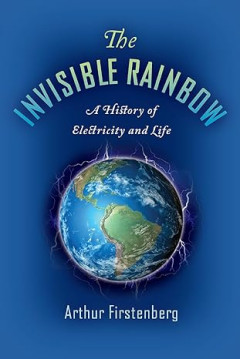
E-Book The Invisible Rainbow: A History of Electricity and Life
Over the last 220 years, society has evolved a universal belief that electricity is ‘safe’ for humanity and the planet. Scientist and journalist Arthur Firstenberg disrupts this conviction by telling the story of electricity in a way it has never been told before?from an environmental point of view?by detailing the effects that this fundamental societal building block has had on our health …
- Edisi
- -
- ISBN/ISSN
- 9781645020097
- Deskripsi Fisik
- 398 halaman
- Judul Seri
- -
- No. Panggil
- 609 FIR t
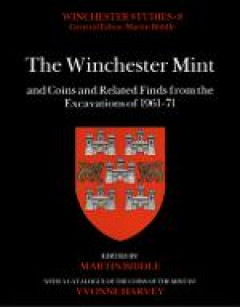
E-Book The Winchester Mint and Coins and Related Finds from the Excavations o…
Edited by Martin Biddle with a catalogue of the known coins of the mint by Yvonne Harvey, this volume records and illustrates the minting of silver pennies in Winchester between the reigns of Alfred the Great and Henry III, a period of three and a half centuries. At the Mint, which was situated in the area of the High Street to the east of where the city’s cross now stands, at least 24 millio…
- Edisi
- -
- ISBN/ISSN
- 9781803270128
- Deskripsi Fisik
- 768 halaman, ilus.
- Judul Seri
- -
- No. Panggil
- 737.49 BID t
E-book A History of Modern Indonesia since c.1200
The spread of Islam is one of the most significant processes of Indonesian history, but also one of the most obscure. Muslim traders had apparently been present in some parts of Indonesia for several centuries before Islam became established within the local communities. When, why and how the conversion of Indonesians began has been debated by several scholars, but no definite conclusions have…
- Edisi
- 3rd ed.
- ISBN/ISSN
- 0333800990
- Deskripsi Fisik
- 515 hlm
- Judul Seri
- -
- No. Panggil
- 959.801 RIC a
E-book A History of the World from the 20th to the 21st Century
During the first half of the twentieth century Europe suffered a cataclysmic change. The lives of millions were destroyed, millions more lives blighted. What led to such a chain of catastrophes? The fratricidal Great War marks the turning point in the history of Europe. There is no single cause that explains it all, but a multiplicity that need to be untangled. Paradoxically industrial progress…
- Edisi
- -
- ISBN/ISSN
- 0203641760
- Deskripsi Fisik
- 1008 hlm
- Judul Seri
- -
- No. Panggil
- 909.83 GRE a

E-Book Risible: Laughter without Reason and the Reproduction of Sound
Risible explores the forgotten history of laughter, from ancient Greece to the sitcom stages of Hollywood. Delia Casadei approaches laughter not as a phenomenon that can be accounted for by studies of humor and theories of comedy but rather as a technique of the human body, knowable by its repetitive, clipped, and proliferating sound and its enduring links to the capacity for language and repro…
- Edisi
- -
- ISBN/ISSN
- 9780520391338
- Deskripsi Fisik
- 234 halaman
- Judul Seri
- -
- No. Panggil
- 792.2 CAS r

E-Book Remapping Travel Narratives (1000–1700): To the East and Back Again
With a specific focus on travel narratives, this collection looks at how Islamic and eastern cultural threads were weaved, through travel and trading networks, into Western European/Christian visual culture and discourse and, ultimately, into the artistic explosion which has been labeled the “Renaissance.” Scholars from across humanities disciplines examine Islamic, Jewish, Spanish, Italian…
- Edisi
- -
- ISBN/ISSN
- 9781942401599
- Deskripsi Fisik
- 295 halaman, ilus.
- Judul Seri
- -
- No. Panggil
- 936 PIE r
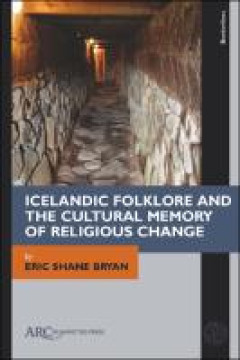
E-Book Icelandic Folklore and the Cultural Memory of Religious Change
This book attempts to understand the origins and development of religious belief in Iceland and greater Scandinavia through the lenses of five carefully selected Icelandic folktales collected in Iceland during the nineteenth century. Each of these five stories has a story of its own: a historical and cultural context, a literary legacy, influences from beliefs of all kinds (orthodox and heterod…
- Edisi
- -
- ISBN/ISSN
- 9781641893756
- Deskripsi Fisik
- 171 halaman, ilus.
- Judul Seri
- -
- No. Panggil
- 270 BRY i
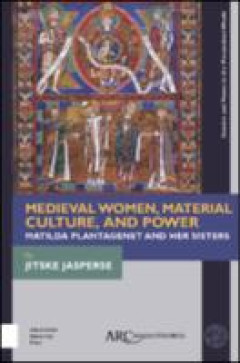
E-Book Medieval Women, Material Culture, and Power: Matilda Plantagenet and h…
This book argues that the impressive range of belongings that can be connected to Duchess Matilda Plantagenet allows us to perceive elite women’s performance of power, even when they are largely absent from the official documentary record.
- Edisi
- -
- ISBN/ISSN
- 9781641891455
- Deskripsi Fisik
- 149 halaman
- Judul Seri
- -
- No. Panggil
- 709.02 JAS m
E-book The Fall of Berlin
A million and a half Jews fought in the armed forces of the Allies during the Second World War. They served in the armies, navies, and air forces of their native lands. Many who were forced to flee the Nazis then joined the war effort in the countries that had given them refuge. Between 490,000 and 520,000 Jewish soldiers fought in the Red Army.1Most of them were nat…
- Edisi
- -
- ISBN/ISSN
- 9781800640795
- Deskripsi Fisik
- 251 hlm
- Judul Seri
- -
- No. Panggil
- 909.82 MAN t
E-book Ancient Greence : From Prehistoric to Hellenistic Times
“Most things in the history of Greece have become a subject of dispute” is how Pausanias, the second-century a.d. author of a famous guide to sites throughout Greece, summed up the challenge and the fascination of thinking about the significance of ancient Greek history (Guide to Greece 4.2.3). The subject was disputed then because Pausanias, a Greek, lived and wrote under the Roman Empire,…
- Edisi
- -
- ISBN/ISSN
- 9780300160055
- Deskripsi Fisik
- 325 hlm
- Judul Seri
- -
- No. Panggil
- 938 MAR a
E-Book Memory of the World: Documentary Heritage in Asia and the Pacific
- Edisi
- -
- ISBN/ISSN
- 9789887723103
- Deskripsi Fisik
- 160 halaman, illus.
- Judul Seri
- -
- No. Panggil
- 950 UNE m
- Edisi
- -
- ISBN/ISSN
- 9789887723103
- Deskripsi Fisik
- 160 halaman, illus.
- Judul Seri
- -
- No. Panggil
- 950 UNE m
E-Book Memory of the World: Documentary Heritage Treasures of Africa
THIS book introduces the documentary heritage inscriptions from Africa on the Memory of the World International Register up to 2023. Its publication was made possible thanks to the collective expertise and efforts of the members of the Africa Regional Committee for Memory of the World (ARCMoW), the custodians of the Memory of the World inscriptions across Africa, the national Memory of the Worl…
- Edisi
- -
- ISBN/ISSN
- 9789231006463
- Deskripsi Fisik
- 86 pages : illustrations
- Judul Seri
- -
- No. Panggil
- 960 UNE m
E-Book New Narratives of Russian and East European Art
This book brings together thirteen scholars to introduce the newest and most cutting-edge research in the field of Russian and East European art history. Reconsidering canonical figures, re-examining prevalent debates, and revisiting aesthetic developments, the book challenges accepted histories and entrenched dichotomies in art and architecture from the nineteenth century to the present. In do…
- Edisi
- -
- ISBN/ISSN
- 9780429642951
- Deskripsi Fisik
- 257 halaman
- Judul Seri
- -
- No. Panggil
- 947 MAR n
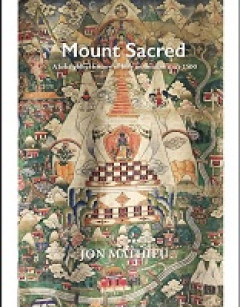
E-Book Mount Sacred: A Brief Global History of Holy Mountains Since 1500
Mount Kailash in Asia, the Black Hills in North America, Uluru in Australia: around the globe there are numerous mountains that have been and continue to be attributed sacredness. Worship of these mountains involves prayer, meditation and pilgrimage. Christianity, which for a long time showed little interest in nature, provides a foil to these practices and was one factor in the tensions that a…
- Edisi
- -
- ISBN/ISSN
- 9781912186716
- Deskripsi Fisik
- 168 halaman
- Judul Seri
- -
- No. Panggil
- 201.6 MAT m
E-book War and Insurgency in the Western Sahara
At a crucial crossroads between Africa and Europe, the Mediterranean and the Atlantic, and the “Arab World” and the West, Morocco has long had a special place in U.S. diplomacy and strategic planning. Since the terrorist attacks of September 11, 2001 (9/11), Morocco’s importance to the United States has only increased; in 2004, President George W. Bush designated the country as a “major…
- Edisi
- -
- ISBN/ISSN
- -
- Deskripsi Fisik
- 106 hlm
- Judul Seri
- -
- No. Panggil
- 962.8 JEN w
E-book Western Sahara
The area lies in North Africa, on the coast of the Atlantic Ocean. It is bordered by Morocco in the north, Algeria in the east (they have 42 kms of common boundary) and Mauritania from the east and south. Its area is 266,000 square kilometres. Just like in most African countries, the borders were marked out by the colonial powers by ratifying different treaties, agreements. The borders of Weste…
- Edisi
- -
- ISBN/ISSN
- 9789638833204
- Deskripsi Fisik
- 198 hlm
- Judul Seri
- -
- No. Panggil
- 962.8 BES w
E-book The Global Cold War : Third World Interventions and the Making of Our …
‘‘We look into history from motives of two kinds,’’ says the Oxford classicist Jasper Griffin. ‘‘There is curiosity about the past, what happened, who did what, and why; and there is the hope to understand the present, how to place and interpret our own times, experiences, and hopes for the future.’’1 As with the history of antiquity, the best contemporary history is usually dri…
- Edisi
- -
- ISBN/ISSN
- 9780521703147
- Deskripsi Fisik
- 498 hlm
- Judul Seri
- -
- No. Panggil
- 909.82 WES t
E-book The Cold War: A Very Short Introduction
Explanations for the onset of the Cold War must begin with World War II. A conflict that ranks, by any conceivable measure, as the most destructive in human history, World War II brought unparalleled levels of death, devastation, privation, and disorder. ‘The conflagration of 1939–1945 was so wrenching, so total, so profound, that a world was overturned,’ notes historian Thomas G. Paterso…
- Edisi
- -
- ISBN/ISSN
- 9780192801784
- Deskripsi Fisik
- 201 hlm
- Judul Seri
- -
- No. Panggil
- 909.82 MAH t
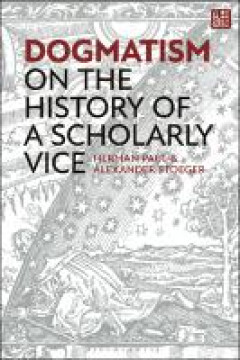
E-Book Dogmatism: On the History of a Scholarly Vice
Why does the history of dogmatism deserve our attention? This open access book analyses uses of the term, following dogmatism from Victorian Britain to Cold War America, examining why it came to be regarded as a vice, and how understandings of its meaning have evolved. Whilst the field of scientific thought is committed to continuous innovation, ideas about dogmatism – with their roots in anc…
- Edisi
- -
- ISBN/ISSN
- 9781350399570
- Deskripsi Fisik
- 115 halaman
- Judul Seri
- -
- No. Panggil
- 901 PAU d
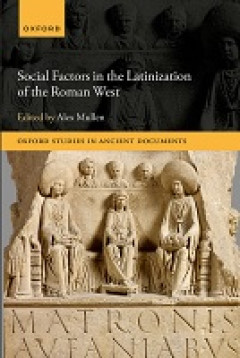
E-Book Social Factors in the Latinization of the Roman West
Latinization is a strangely overlooked topic. Historians have noted it has been ‘taken for granted’ and viewed as an unremarkable by-product of ‘Romanization’, despite its central importance for understanding the Roman provincial world, its life and languages. This volume aims to fill the gap in our scholarship, along with its sister volumes, Latinization, Local Languages and Literacies…
- Edisi
- -
- ISBN/ISSN
- 9780198887294
- Deskripsi Fisik
- 378 halaman
- Judul Seri
- -
- No. Panggil
- 306.44 MUL s
E-book The Invasion of the Dutch East Indies
As a result of World War I, Japan, the United States and Great Britain came to be referred to as the three great powers. The [former German] equatorial Pacific Islands lying between the U.S. territories of the Philippines and Guam and the U.S. mainland became mandated territories of Japan. From way back, Britain had acquired various rights and interests in China with Singapore and Hong Kong ser…
- Edisi
- -
- ISBN/ISSN
- 9789400602298
- Deskripsi Fisik
- 673 hlm
- Judul Seri
- -
- No. Panggil
- 959.802 REM t
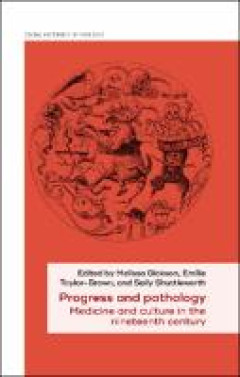
E-Book Progress and Pathology: Medicine and Culture in the Nineteenth Century
This collaborative volume explores changing perceptions of health and disease in the context of the burgeoning global modernities of the long nineteenth century. During this period, popular and medical understandings of the mind and body were challenged, modified, and reframed by the politics and structures of ‘modern life’, understood in industrial, social, commercial, and technological te…
- Edisi
- -
- ISBN/ISSN
- 9781526147547
- Deskripsi Fisik
- 389 halaman
- Judul Seri
- -
- No. Panggil
- 362.1068 DIC p
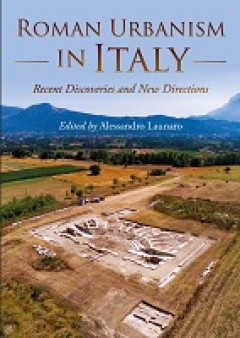
E-Book Roman Urbanism in Italy: Recent Discoveries and New Directions
The study of Roman urbanism – especially its early (Republican) phases – is extensively rooted in the evidence provided by a series of key sites, several of them located in Italy. Some of these Italian towns (e.g. Fregellae, Alba Fucens, Cosa) have received a great deal of scholarly attention in the past and they are routinely referenced as textbook examples, framing much of our understandi…
- Edisi
- -
- ISBN/ISSN
- 9798888570364
- Deskripsi Fisik
- 280 halaman
- Judul Seri
- -
- No. Panggil
- 936 LAU r
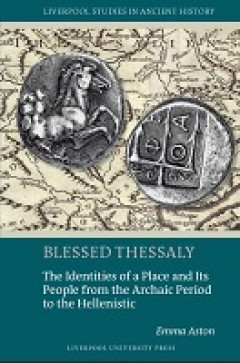
E-Book Blessed Thessaly: The Identities of a Place and Its People from the Ar…
Thessaly was a region of great importance in the ancient Greek world, possessing both agricultural abundance and a strategic position between north and south. It presents historians with the challenge of seeing beyond traditional stereotypes (wealth and witches, horses and hospitality) that have coloured perceptions of its people from antiquity to the present day. It also presents a complex and…
- Edisi
- -
- ISBN/ISSN
- 9781835530016
- Deskripsi Fisik
- 520 halaman
- Judul Seri
- -
- No. Panggil
- 938 AST b
E-book The History of Southern Africa
Archaeological findings have indicated that Southern Africa is the land from which humankind’s ancestors evolved, between 3 million and 1 million years ago. Indeed, it is probable that the indigenous San, Pygmy, and Khoekhoe peoples of Southern Africa are linked genetically to that earlier, ancient population. Little, if anything, is known about interaction among these particular early group…
- Edisi
- -
- ISBN/ISSN
- 9781615303984
- Deskripsi Fisik
- 240 hlm
- Judul Seri
- -
- No. Panggil
- 968 MCK t
E-book A History of South Africa
Modern Western culture is inordinately present-minded. Politicians are ignorant of the past. School curricula foreshorten the historical record by focusing on recent events. People lack a sense of their location in time and fail to perceive that contemporary society is constrained by its cultural as well as its biological inheritance. Many historians of the white South African establishment sta…
- Edisi
- 3rd ed.
- ISBN/ISSN
- 0300087764
- Deskripsi Fisik
- 418 hlm
- Judul Seri
- -
- No. Panggil
- 968 THO a
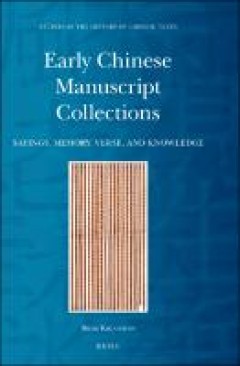
E-Book Early Chinese Manuscript Collections: Sayings, Memory, Verse, and Know…
As the first study of manuscript collections, this book asks what changes when sayings, stories, songs, and spells are brought together on the same carrier. Covering a plethora of manuscripts from the Warring States and early empires, and spanning sources from philosophy, historiography, poetry, and technical literature, this study describes the whole life-cycle of multiple texts collected on a…
- Edisi
- -
- ISBN/ISSN
- 9789004540842
- Deskripsi Fisik
- 232 halaman
- Judul Seri
- -
- No. Panggil
- 091 KRI e
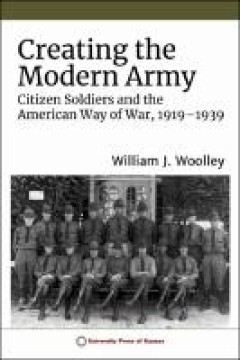
E-Book Creating the Modern Army: Citizen-Soldiers and the American Way of War…
The modern US Army as we know it was largely created in the years between the two world wars. Prior to World War I, officers in leadership positions were increasingly convinced that building a new army could not take place as a series of random developments but was an enterprise that had to be guided by a distinct military policy that enjoyed the support of the nation. In 1920, Congress accepte…
- Edisi
- -
- ISBN/ISSN
- 9780700633029
- Deskripsi Fisik
- 384 halaman
- Judul Seri
- -
- No. Panggil
- 940.4 WOO c
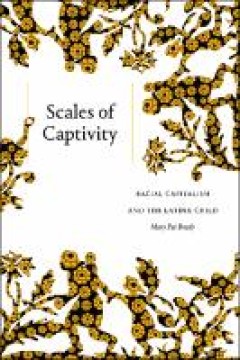
E-Book Scales of Captivity
Mary Pat Brady traces the figure of the captive and cast-off child over 150 years of Latinx/Chicanx literature as a critique of colonial modernity and the forms of confinement that underpin racialized citizenship.
- Edisi
- -
- ISBN/ISSN
- 9781478092445
- Deskripsi Fisik
- 313 halaman
- Judul Seri
- -
- No. Panggil
- 901 BRA s
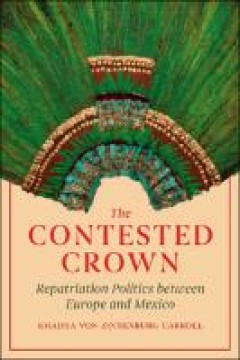
E-Book The Contested Crown: Repatriation Politics between Europe and Mexico
Following conflicting desires for an Aztec crown, this book explores the possibilities of repatriation. In The Contested Crown, Khadija von Zinnenburg Carroll meditates on the case of a spectacular feather headdress believed to have belonged to Montezuma, the last emperor of the Aztecs. This crown has long been the center of political and cultural power struggles, and it is one of the most cont…
- Edisi
- -
- ISBN/ISSN
- 9780226802237
- Deskripsi Fisik
- 240
- Judul Seri
- -
- No. Panggil
- 978 CAR t
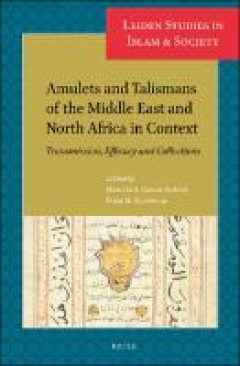
E-Book Amulets and Talismans of the Middle East and North Africa in Context: …
In this volume amulets and talismans are studied within a broader system of meaning that shapes how they were manufactured, activated and used in different networks. Text, material features and the environments in which these artifacts circulated, are studied alongside each other, resulting in an innovative approach to understand the many different functions these objects could fulfil in pre-mo…
- Edisi
- -
- ISBN/ISSN
- 9789004471481
- Deskripsi Fisik
- 319 halaman
- Judul Seri
- -
- No. Panggil
- 939.4 GAR a
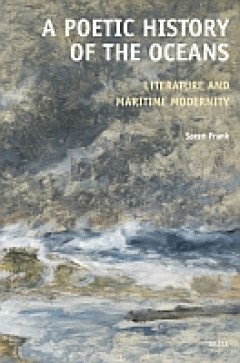
E-Book A Poetic History of the Oceans: Literature and Maritime Modernity
What is the ocean’s role in human and planetary history? How have writers, sailors, painters, scientists, historians, and philosophers from across time and space poetically envisioned the oceans and depicted human entanglements with the sea? In order to answer these questions, Søren Frank covers an impressive range of material in A Poetic History of the Oceans: Greek, Roman and Biblical text…
- Edisi
- -
- ISBN/ISSN
- 9789004426702
- Deskripsi Fisik
- 466 halaman
- Judul Seri
- -
- No. Panggil
- 930 FRA a
E-book A Short History of Bali : Indonesia's Hindu Realm
In the early 1980s I was sitting in the coffee shop of the Bali Beach Hotel in Sanur, reflecting on the strange fact that Dutch troops had come ashore nearby, less than 80 years previously, on their way to perpetrate one of the more extraordinary massacres in the history of colonialism. I did not know that the Japanese had also landed in this same area in 1942, or that the Dutch had returned he…
- Edisi
- -
- ISBN/ISSN
- 1865088633
- Deskripsi Fisik
- 285 hlm
- Judul Seri
- -
- No. Panggil
- 959.8 PRI a
E-book Beginner's Danish
Historically speaking, Danish is a dialect of a common Scandinavian language known from around 200 AD. Around 1100-1200 AD, Danish became a distinctive language with a distinctive pronuncation. The period from 800-1100 AD is called Old Danish or Runic Danish, as our knowledge of the language is primarily based on runic inscriptions. In the 20th century, the advent of radio broadcasts in 1932 an…
- Edisi
- -
- ISBN/ISSN
- -
- Deskripsi Fisik
- 355 hlm
- Judul Seri
- -
- No. Panggil
- 948.1 SCH b
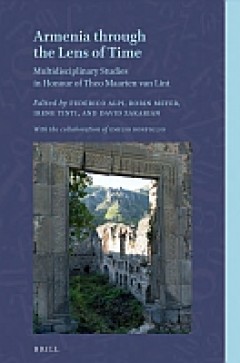
E-Book Armenia through the Lens of Time
The open access publication of this book has been published with the support of the Swiss National Science Foundation. From pilgrimage sites in the far west of Europe to the Persian court; from mystic visions to a gruesome contemporary “dance”; from a mundane poem on wine to staggering religious art: thus far in space and time extends the world of the Armenians. A glimpse of the vast and st…
- Edisi
- -
- ISBN/ISSN
- 9789004527607
- Deskripsi Fisik
- 566 halaman
- Judul Seri
- -
- No. Panggil
- 939.5 ALP a
E-book Outline of U.S. History
The first people to reach North America almost certainly did so without knowing they had crossed into a new continent. They would have been following game, as their ancestors had for thousands of years, along the Siberian coast and then across the land bridge. Once in Alaska, it would take these first North Americans thousands of years more to work their way through the openings in great glaci…
- Edisi
- -
- ISBN/ISSN
- -
- Deskripsi Fisik
- 380 hlm
- Judul Seri
- -
- No. Panggil
- 970 TIM o

E-Book Astrophysics, Astronomy and Space Sciences in the History of the Max P…
This book provides the first comprehensive historical account of the evolution of scientific traditions in astronomy, astrophysics, and the space sciences within the Max Planck Society. Structured with in-depth archival research, interviews with protagonists, unpublished photographs, and an extensive bibliography, it follows a unique history: from the post-war relaunch of physical sciences in W…
- Edisi
- -
- ISBN/ISSN
- 9789004529137
- Deskripsi Fisik
- 745 halaman
- Judul Seri
- -
- No. Panggil
- 523.01 BON a
E-book Moving Histories : Irish Women’s Emigration to Britain from Independ…
This book looks at the impact women’s migration had on Ireland in the crucial years of initial independence, from the partition of the island and the founding of the Free state to the declaration of a Republic. This period saw Ireland move from internal political instability in the 1920s to a more internationally focused country in the 1950s. However, emi…
- Edisi
- -
- ISBN/ISSN
- 9781786949608
- Deskripsi Fisik
- 296 hlm
- Judul Seri
- -
- No. Panggil
- 941 RED m
E-book A Memory of Ice : The Antarctic Voyage of the Glomar Challenger
Growing up in Western Australia, in the southwestern corner of that huge and sparsely populated state, it was difficult to be unaware of the bizarre splendour, diversity and colour of the local vegetation. This, the South West Botanical Province, is now recognised as one of 25 biodiversity hotspots in the world. Its abundance of flowering plants, possibly over 9,000 species, is greater than alm…
- Edisi
- -
- ISBN/ISSN
- 9781760462956
- Deskripsi Fisik
- 246 hlm
- Judul Seri
- -
- No. Panggil
- 998 TRU a
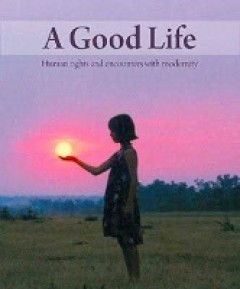
E-Book A Good Life: Human Rights and Encounters with Modernity
This book is a story. It’s a story about ordinary people in very different parts of the world dealing with rapid change in the late twentieth and early twenty-first
- Edisi
- -
- ISBN/ISSN
- 9781922144669
- Deskripsi Fisik
- 314 halaman
- Judul Seri
- -
- No. Panggil
- 909.82 EDM a
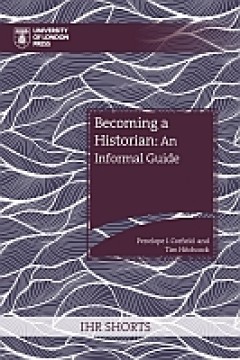
E-Book Becoming a Historian: An Informal Guide
Writing history is an art and a craft. This handbook supports research students and independent scholars by showing how the historical profession works and how to participate in its vibrant community of scholars. It outlines techniques to help design large-scale research projects, demonstrates the difference between quantitative and qualitative research methodologies and provides advice on brin…
- Edisi
- -
- ISBN/ISSN
- 9781914477164
- Deskripsi Fisik
- 216 halaman
- Judul Seri
- -
- No. Panggil
- 901 COR b
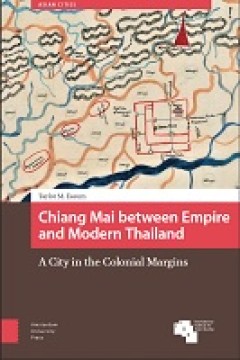
E-Book Chiang Mai between Empire and Modern Thailand: A City in the Colonial …
Urban histories tend to be dominated by large, global cities. But what does the history of the modern, colonial era look like from the perspective of smaller cities? By shifting the focus from the metropolis to the secondary city of Chiang Mai, this study provides an alternative narrative of the formation of the modern Thai state that highlights the overlap between European, American, and Siame…
- Edisi
- -
- ISBN/ISSN
- 9789463726467
- Deskripsi Fisik
- 289 halaman
- Judul Seri
- -
- No. Panggil
- 959.3 EAS c
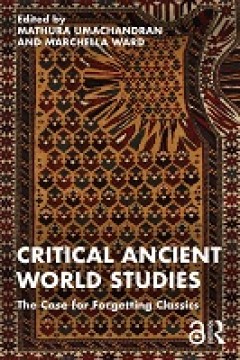
E-Book Critical Ancient World Studies: The Case for Forgetting Classics
This volume explores and elucidates critical ancient world studies (CAWS), a new model for the study of the ancient world operating critically, setting itself against a long history of a discipline formulated to naturalise a hierarchical, white supremacist origin story for an imagined modern West. CAWS is a methodology for the study of antiquity that shifts away from the assumptions and approac…
- Edisi
- -
- ISBN/ISSN
- 9781032120119
- Deskripsi Fisik
- 285 halaman
- Judul Seri
- -
- No. Panggil
- 909.1 UMA c
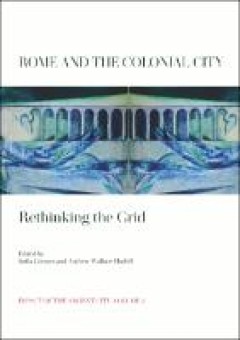
E-Book Rome and the Colonial City: Rethinking The Grid
According to one narrative, that received almost canonical status a century ago with Francis Haverfield, the orthogonal grid was the most important development of ancient town planning, embodying values of civilization in contrast to barbarism, diffused in particular by hundreds of Roman colonial foundations, and its main legacy to subsequent urban development was the model of the grid city, sp…
- Edisi
- -
- ISBN/ISSN
- 9781789257823
- Deskripsi Fisik
- 433 halaman
- Judul Seri
- -
- No. Panggil
- 940 GRE r

E-Book City of Caesar, City of God: Constantinople and Jerusalem in Late Anti…
This volume explores the entangled history of Constantinople and Jerusalem in Late Antiquity. The two cities were powerful symbols of Empire and Church, interconnected and interdependent in multiple ways. Covering the transition between Antiquity, Byzantium, and the Middle Ages, distinguished international scholars investigate art, ceremony, religion, ideology, and imperial rule in these vibran…
- Edisi
- -
- ISBN/ISSN
- 9783110718447
- Deskripsi Fisik
- 349 halaman
- Judul Seri
- -
- No. Panggil
- 930 KLE c
E-Book Ordinary Jerusalem, 1840-1940: Opening New Archives, Revisiting a Glob…
In Ordinary Jerusalem, Angelos Dalachanis, Vincent Lemire and thirty-five scholars depict the ordinary history of an extraordinary global city in the late Ottoman and Mandate periods. Utilizing largely unknown archives, they revisit the holy city of three religions, which has often been defined solely as an eternal battlefield and studied exclusively through the prism of geopolitics and religio…
- Edisi
- -
- ISBN/ISSN
- 9789004375734
- Deskripsi Fisik
- 615 halaman
- Judul Seri
- -
- No. Panggil
- 933 DAL o
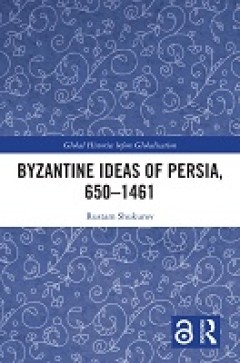
E-Book Byzantine Ideas of Persia, 650–1461
This book offers a study into the perceptions of ancient and medieval Iran in the Byzantine Empire, as well as the effects of Persian culture upon Byzantine intellectualism, society, and culture. Byzantine Ideas of Persia, 650-1461 focuses on the place of ancient Persia in Byzantine cultural memory, both in the "religious" and the "secular" sense. By analysing a wide range of historical sources…
- Edisi
- -
- ISBN/ISSN
- 9781032070681
- Deskripsi Fisik
- 289 halaman
- Judul Seri
- -
- No. Panggil
- 955 SHU b
E-book Most Ancient Egypt
The story of human activity in the land now known as Egypt streches back some five hundred thousand years to an early stage of present, or so-called Quaternary, era in the history of the earth's surface. As elsewhere on that surface this scarcely conceivable span of time covers only a minute fraction of the story of the land itself, the more recent chapters of which take us back approximately s…
- Edisi
- -
- ISBN/ISSN
- -
- Deskripsi Fisik
- 180 hlm
- Judul Seri
- -
- No. Panggil
- 932 HAY m
 Karya Umum
Karya Umum  Filsafat
Filsafat  Agama
Agama  Ilmu-ilmu Sosial
Ilmu-ilmu Sosial  Bahasa
Bahasa  Ilmu-ilmu Murni
Ilmu-ilmu Murni  Ilmu-ilmu Terapan
Ilmu-ilmu Terapan  Kesenian, Hiburan, dan Olahraga
Kesenian, Hiburan, dan Olahraga  Kesusastraan
Kesusastraan  Geografi dan Sejarah
Geografi dan Sejarah